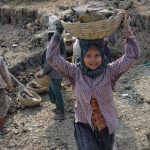SDG 18 Cambodia mine/ERW free

Cambodia has added an 18th goal to its localized version of the Sustainable Development Goals (SDGs) – “End the negative impact of mines/ERW and promote victim assistance”.1 the SDGs were adopted by all United Nations member states in 2015 as a universal call to action ...
SDG 11 Sustainable cities and communities

SDG 11 – “Making cities and human settlements inclusive, safe, resilient and sustainable” – aims to improve housing, transport, public spaces and urban environments, and strengthens resilience to disasters and climate change.there are seven targets covering specific areas and three means of implementation targets.79 Most of the ...
Environmental impact assessments

The primary legal requirements for environmental impact assessments (EIAs) in Cambodia are set out in Chapter III of The Law on Environmental Protection and Natural Resource Management 1996 107(EPNRM Law) and The Sub-Decree on Environmental Impact Assessment 1999 (EIA Sub-Decree).108The Constitution of Cambodia provides in ...
Taxation

Heavy trucks on a street in Phnom Penh, Cambodia. Photo by Phalinn Ool, taken on June 15 2015. Licensed under CC BY-NC-ND 2.0The Cambodian government’s 2014–18 Revenue Mobilization Strategy aimed to enhance revenue administration and strongly increase The collection of taxes and oTher revenue. The ...
Asian Development Bank (ADB)

The Asian Development Bank (ADB) was established in 1966 which headquarter is in Manila and currently has 68 members under its institution. The ADB aims to assist members and partners by providing loans, technical assistance, grants, and investments to promote socio-economic development.180 The ADB has ...
Small and medium enterprises SME

Small and medium enterprises (SME) have long been considered a vital driver to economic growth for developing economies. SMEs stimulate job creation throughout the country. Migration of employment to neighboring countries and the unemployment rate has significantly decreased due to a rising number of SMEs, ...
Mining

The mining sector in Cambodia is mostly undeveloped, and active mining enterprises are typically small-scale quarries producing materials for construction, such as laterite, marble, granite, limestone, gravel and sand. There is no industrial-scale extraction of minerals, although many exploration licenses have been granted to ...
Court monitoring

Respect for strong values is the key to citizens’ trust in their courts.228 the international values recognized for judges are independence and impartiality, integrity, equality of treatment, diligence and competence. A judge cannot both decide a case and have a personal interest in its resolution. ...
Animals

Cambodian animals are state property under Article 48 of the Forestry Law of 2002. This places the Forestry Administration (FA) in charge of research programs and conservation duties. the FA carries this out through its Department of Wildlife and Biodiversity. Conservation programs in the field ...
Climate change

Voice from Cambodia–Time is running out. Photo by Oxfam international, taken on 21 October 2009. Licensed under CC BY-NC-ND 2.0.Climate change is the long-term change in the statistical distribution of weather patterns. While the climate of the earth has always gone through periods of change, modern scientific evidence ...
Plants

Although there are often new discoveries,329 a global lack of up to date data on botanical research makes plants biodiversity hard to assess in Cambodia. Compared to neighboring countries, the number of plant species is low, mostly due to the relative country’s flat landscape.330 Botanical knowledge ...
Forest protection NGOs

The protection of Cambodian forests is primarily The responsibility of The Ministry of Agriculture, Forests and Fisheries (MAFF) and The Ministry of Environment. There are, however, many non-governmental organizations (NGOs) working in The area, from United Nations (UN) agencies and oTher global bodies to locally-registered ...
Labor

The rapid growth of a young adult population in Myanmar will affect The socio economic development plan of The country. investment in skills development, employment and livelihood opportunities is necessary to cater for The growing and The emerging youth bulge to create favorable conditions for ...
Extractive industries

Extractive industries include mining and mineral sectors, natural gas and oil exploration, petroleum refineries, and quarrying for construction resources such as sand, stone, and gravel. Cambodia’s extractive resources have gone largely untapped, while these resources are geographically identifiable. French and Chinese geologists have been indicated ...
Forest protection support

Cambodia is struggling to safeguard its forests while preserving economic growth since many people make a living via farming, logging, and other activities that might lead to deforestation. Almost 80% of Cambodians living in rural regions rely on forests for survival. On the other hand, ...
SDG 5 Gender equality

The Sustainable Development Goal 5 (SDG 5) is initiated to “achieve gender equality and empower all women and girls”. The global SDG 5 consists of 9 targets (3 targets as means of implementation) and 14 indicators. The objectives of SDG 5 are expressed in terms ...
SDG 13 Climate action

SDG 13 is aimed at taking urgent action to combat climate change impacts by developing the capacity of each country to mitigate climate risks and work towards adaptation. Least developed nations, landlocked countries and small island states are recognised as especially in need of support ...
Disasters and emergency response

Cambodia flood, 2011. Photo by European Commission, taken on 11 October 2011. Licensed under CC BY 2.0Storms, flooding and lightning strikes are the major causes of death and property damage from natural disasters in Cambodia, while drought causes severe hardship, especially for farmers. in a ...
SDG 16 Peace, justice and strong institutions

Goal 16’s full title is “Promote peaceful and inclusive societies for sustainable development, provide access to justice for all and build effective, accountable and inclusive institutions at all levels.” It has a monitoring framework of 12 targets (2 around means of implementation) and 23 indicators. Transition ...





